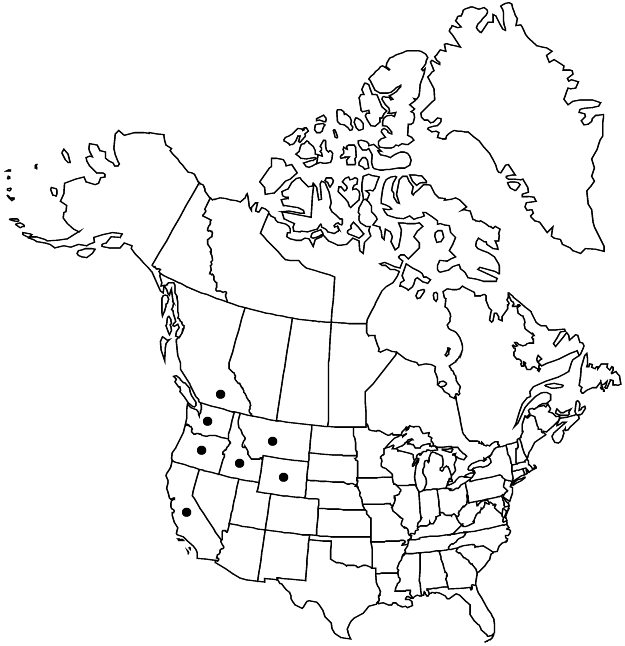Difference between revisions of "Polygonum spergulariiforme"
Bull. Torrey Bot. Club 19: 366. 1892.
FNA>Volume Importer |
FNA>Volume Importer |
(No difference)
| |
Revision as of 20:06, 24 September 2019
Herbs. Stems erect, green, divaricately branched, not wiry, 5–50 cm, usually papillose-scabrid-ulous, rarely glabrescent. Leaves uniformly distributed, articulated to ocreae, basal leaves usually caducous, distal leaves abruptly reduced to bracts, articulated to ocreae; ocrea 8–12 mm, papillose-scabridulous, proximal part cylindric, distal part disintegrating into a few persistent fibers; petiole 0.1–2 mm; blade 1-veined, not pleated, linear to lanceolate, 35–60 × 1–3 mm, margins flat or narrowly revolute, smooth or papillose-denticulate, apex acute, mucronate. Inflorescences axillary and terminal, spikelike, dense; cymes crowded, ± overlapping at branch tips, 2–5-flowered. Pedicels enclosed in or slightly exserted from ocreae, erect to spreading, 0.5–2 mm. Flowers open or semi-open; perianth 3–5 mm; tube 9–17% of perianth length; tepals overlapping, uniformly pink or white, petaloid, oblong-obovate, cucullate, navicular in distal 1/4, apex rounded; midveins branched; stamens 8. Achenes enclosed in perianth, black, narrowly elliptic or elliptic-lanceolate to narrowly ovate, 3–5 mm, faces subequal, shiny, smooth to striate-tubercled.
Phenology: Flowering Jun–Oct.
Habitat: Moist to dry, open rocky places, including serpentine
Elevation: 10-2000 m
Distribution

B.C., Calif., Idaho, Mont., Oreg., Wash., Wyo.
Discussion
Selected References
None.